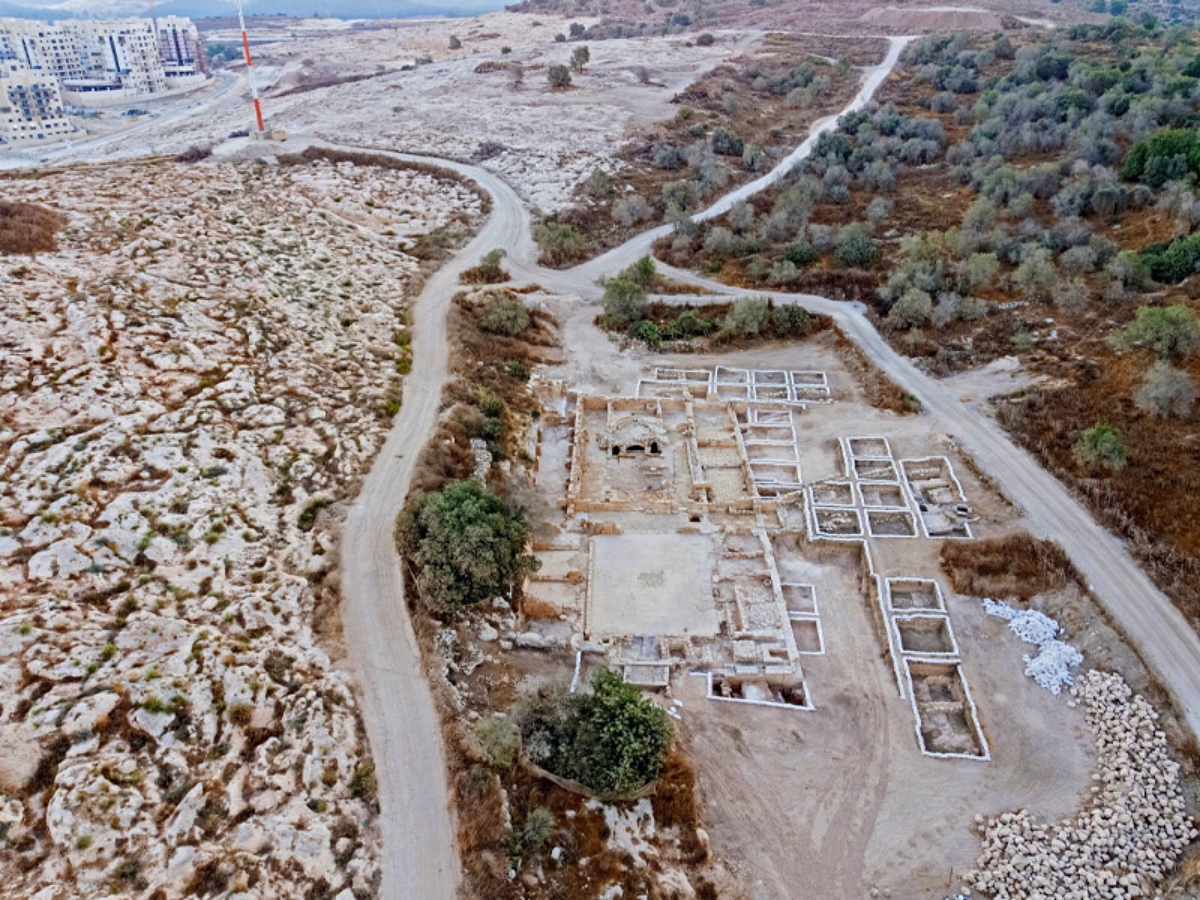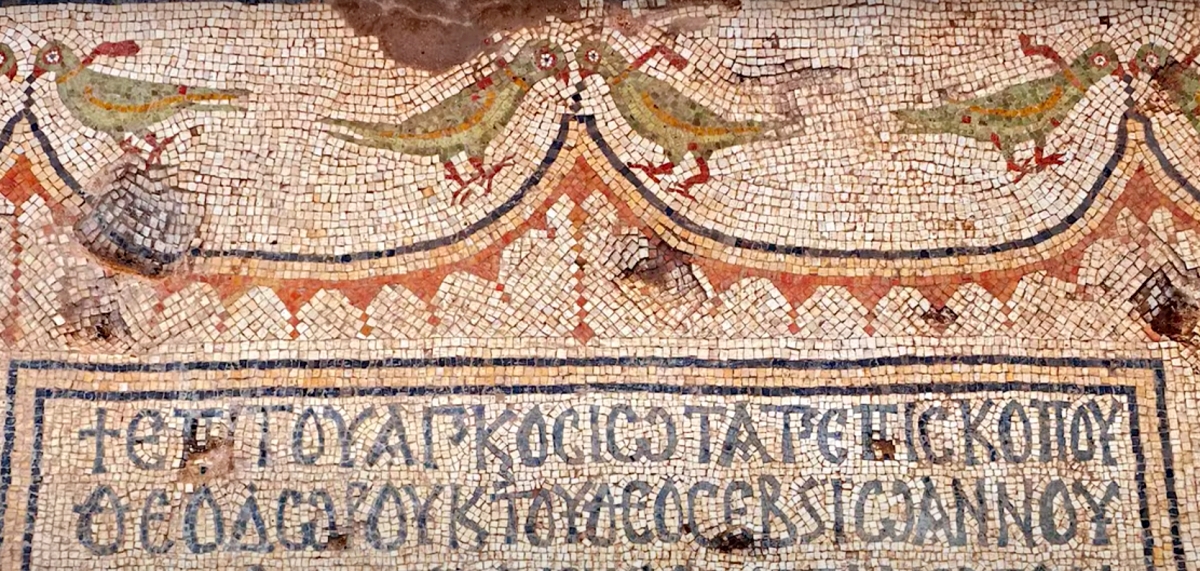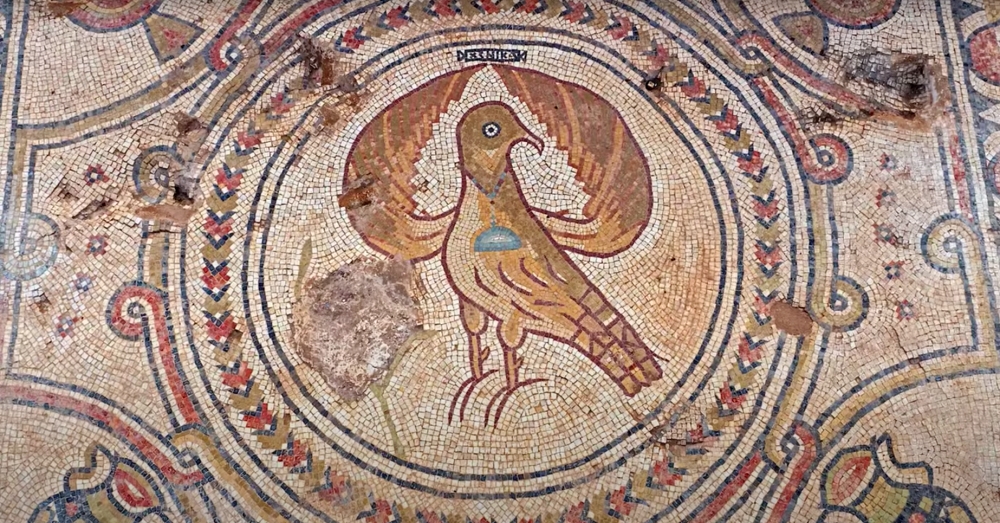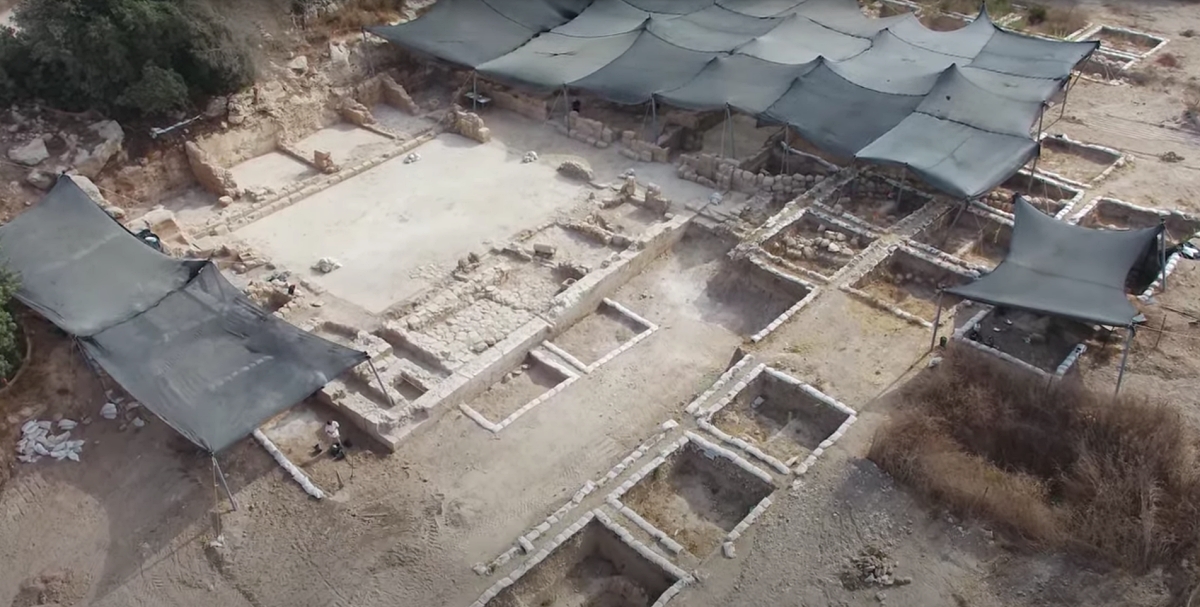Gorgeous Church to the Unknown “Glorious Martyr” Found Near Jerusalem
Imagery like this from the period is unusual to find today.
Visit the gothic cathedrals of Europe that are almost 1,000-years-old and you’ll often see lots of marble, some mosaics, and the central nave lined on two or more sides buy corridors. Underneath these incredible churches you can often find sacred crypts were martyrs were buried as well as the wealthy financial donors who contributed money and resources to the church. Many of these same elements are found in much earlier Byzantine churches, such as the recently-discovered “Church of the Glorious Martyr” about an hour west of Jerusalem in Israel.

Back in 2017 an ancient Christian church was found in the Ramat Beit Shemesh area with stunning mosaic tile floors and other features that mark it as an illustrious house of worship. An ongoing excavation at the site revealed a host of information, some of which has been published in the fall 2021 edition of the Biblical Archaeology Review.
The church is part of a larger complex which spans 1.5 dunams (equivalent to 1,500 square meters) and includes a central nave that was once lined with marble and had 2 halls on either side. There was also a large courtyard near the entrance to the church with a narthex (or portico).

Under the bema (or pulpit) lies an extensive crypt with a staircase going down on one end and another going up at another- signifying that the space was designed for religious pilgrims passing through the underground passage in potentially large numbers. The crypt would have most likely contained the remains of at least one martyr in a reliquary behind a marble screen.
While the church has been named the “Church of the Glorious Martyr” is remains unclear who that martyr actually was. Lead researcher on the project, Benyamin Storchan, has narrowed down some of the inscriptions at the site and has found mention of someone name Zechariah, though it’s unclear if this refers to one of the Zechariahs mentioned in the Bible or another person altogether.

The church was built during the reign of Justinian the Great, who ruled from 527-565 AD. The elegant floor was embellished with themes from nature including plants and animals. Then, about 50 years later the church was remodeled – funded by Emperor Flavius Tiberius who reigned from 578 to 582.
Under these new aesthetic guidelines many of the more nature-themed imagery was destroyed and replaced with geometric designs. The changes were most likely due to a rise in iconoclasm, a movement which viewed the literal imagery of animals and saints as worshipping idols instead of God. Strangely, though the zoomorphic imagery was changed and/or defaced in the 6th century, some of the animal mosaics were left unharmed, such as those of birds on the floor tiles.

The iconoclasm debate meant that many icons were destroyed and consequently few Byzantine icons exist today.
In the crypt around 300 clay oil lamps were found dating to the Abbasid period (around 750-1258). The church is thought to have been in use until about the 10th century – about 500 years before the fall of the Byzantine Empire, the Eastern expanse of the Roman Empire that persisted until well after the fall Rome.

The project had a number of collaborators, including the Bible Lands Museum, the Ministry of Construction and Housing, and the Israeli Antiques Authority. But, none were so important as the 5,000 teens who completed the excavations through religious youth groups, as part of preparations for their national service in the IDF, and through schools across Israel.
See more on this fascinating church to the unknown martyr in the video below.
SKM: below-content placeholderWhizzco for DOT

